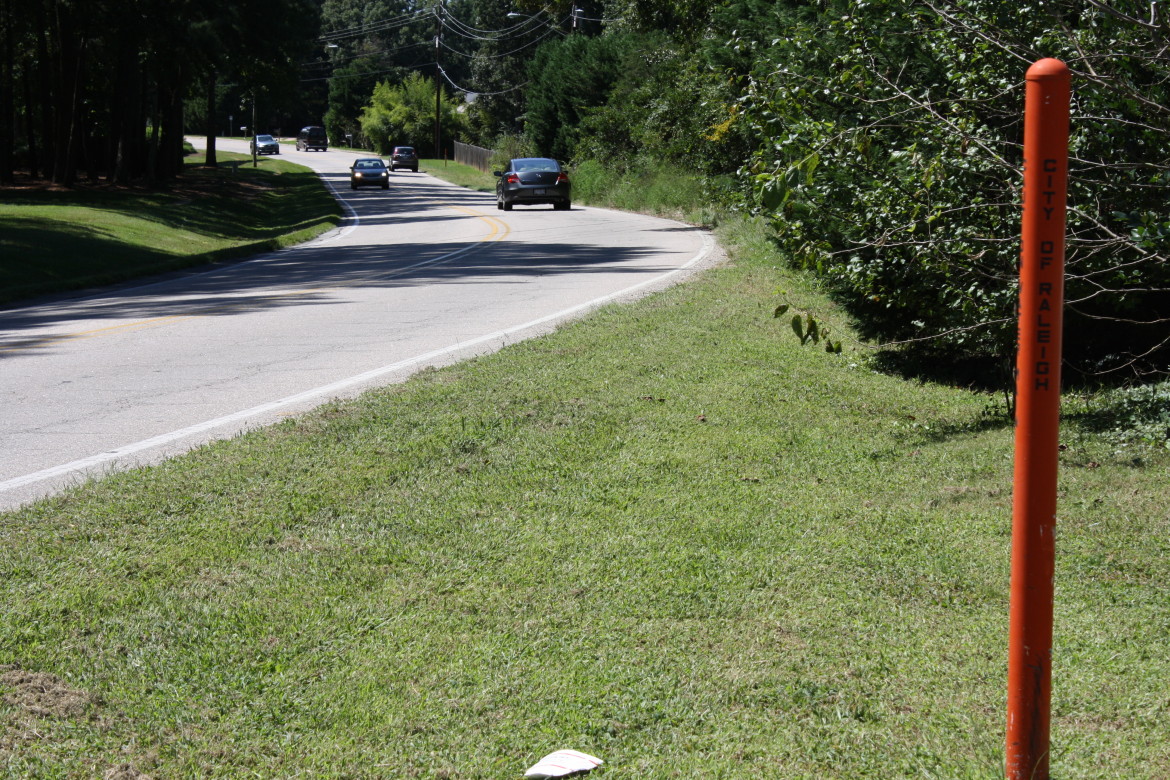CORRECTION APPENDED: The original article said an additional penny on sales tax would bring in an additional $45 to $50 million in revenue. The penny on sales tax could actually support a bond of that amount. Also, Eric Lamb is Raleigh’s transportation planning manager, not the transportation manager.
It’s been on Raleigh’s to-do list for 10 years, but just last week City Council members voted to fund the redesign of Sandy Forks Road.
Councilors approved $1.5 million to redesign the mile-long road, which connects Spring Forest Road to Falls of Neuse Road. The money will come from the general fund and will be repaid with a portion of the next transportation bond.
Sandy Forks Road was a rural road that experienced a nearby development explosion in the 1980s, explained Raleigh Transportation Planning Manager Eric Lamb.
Today, developers are required to improve substandard streets based on the city’s future plans for that area. That wasn’t the case 30 years ago, and the pavement has deteriorated. The only ongoing road maintenance has been pothole patching; it has never been repaved.
 [/media-credit]
[/media-credit]Ariella Monti
Sandy Forks Road.
“They’re doing what we in the city want people to do,” said District A Councilor Randy Stagner. “They’re walking places … but they’ve got no place to do this.”
Sandy Forks sits in Stagner’s district, and he has been advocating for the road’s rehabilitation since the most recent Capital Improvement Plan kept it on the “unfunded” list.
While Sandy Forks itself is primarily a residential street, it is also very close to businesses on Six Forks and Falls of Neuse roads. Heavy foot traffic has cut paths in the grass on the side of the street.
Because the road is in such bad shape, it will need to be completely replaced. A preliminary design includes turning lanes, sidewalks, bike lanes or sharrows, and curb and gutter, similar to the recent improvements on Newton Road.
The total cost of the project will run about $10 million, including last week’s allocation. By comparison, the Hillsborough Street roundabout project cost $9 million.
Lamb stressed that only the design work for Sandy Forks has been funded. The city still needs to come up with $9 million to do the rest of the work.
A Long Road
“It should have been done five years ago,” Burton said.
Burton said he hasn’t seen the road in good shape since the late 1970s, when he graduated from Millbrook High School. Burton moved back to the area three years ago and has been the community’s Sandy Forks spokesman.
“For me it’s a safety issue,” he said. “The road is just horrible.”
Burton said he’s excited the city will begin the design work, but is concerned that it will take another 10 years to see the work completed.
“Sandy Forks has been a priority for us for a long time,” Lamb said.
The project has been listed in the city’s Capital Improvement Program since 2001, but has never been funded.
Lamb said Sandy Forks was originally listed as a project to be funded with the 2011 transportation bond. Ultimately, it was not included in the $40 million bond approved by voters last November. Subsequently, Sandy Forks was put on hold for another year.
While the project is one of 30 street projects worth $216.6 million that remain unfunded, Sandy Forks was next in line to get some attention and didn’t jump ahead of any other projects.
When the design work is completed in about a year, Sandy Forks will be one of three designed projects waiting for construction funding. The total, including design, for the Buck Jones Road widening and Mitchell Mill Road widening cost $8.1 million and $19.4 million, respectively.
“Ideally, we can get them all funded,” Lamb said.
Transit planning staff members are working on a list of project priorities for a potential 2013 transportation bond.
In June, when the list of unfunded streets was being discussed at budget work session, City Manager Russell Allen said an additional penny on the tax rate could support an additional $45 million to $50 million in bond funding.
